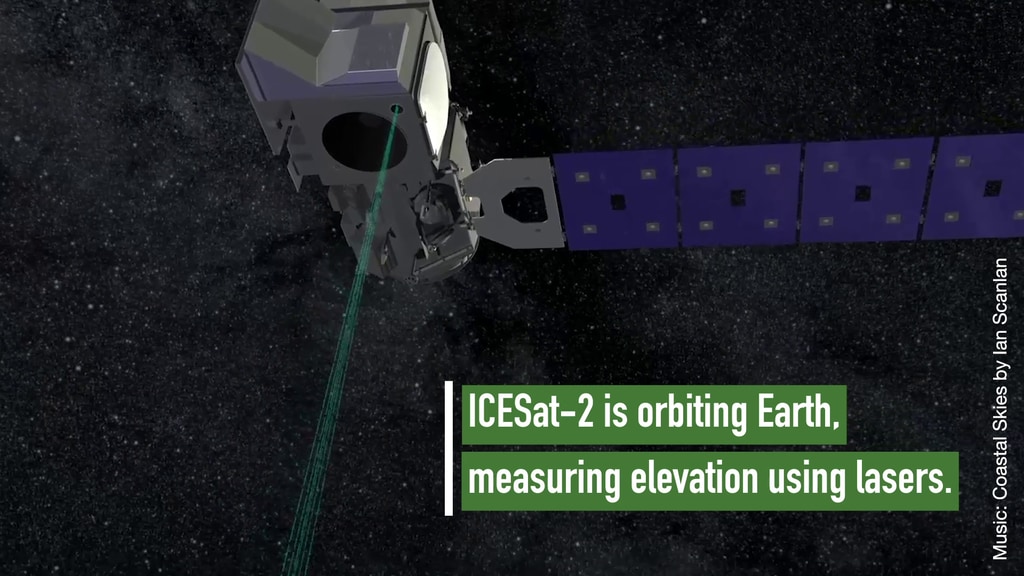GLOBE Observer Why Observe?: Tree Height
Music:
“Enchanted Woodland” by Brice Davoli [SACEM] & Valeria Deniz [SACEM]; Koka Media & Universal Publishing Production Music France; Universal Production Music
“Tales of Everlasting Winter” by Brice Davoli [SACEM]; Koka Media & Universla Publishing Production Music France; Universal Production Music
“Puzzled," "Intrigues and Plots," & "Pulsing Mallets" by Laurent Dury [SACEM]; Koka Media & Universal Publishing Production Music France; Universal Production Music
“Foreign Land” by Hannes Gottwald [GEMA] & Sinan Hosgel [GEMA]; Ed. Berlin Production Music/Universal Production Music GmbH; Universal Production Music
Why Observe?: Tree Height explores surface height measurement missions and the role that citizen science can play within the scientific community.
NASA uses field campaigns and sensors on satellites and the International Space Station (ISS) to improve our understanding of how much carbon is being stored in terrestrial ecosystems and how this could change as patterns of drought, fire, and forest ecosystems shift in a changing climate. For example, NASA has launched satellites such as the Ice, Cloud and land Elevation Satellite-2 (ICESat-2) as well as instruments on the International Space Station such as the Global Ecosystem Dynamics Investigation (GEDI), which use lasers to measure the height of Earth’s surface below them as they orbit our planet. These different datasets from field campaigns and sensors can inform scientists of nuances in data and verify one another. This data can also help to develop and adjust the algorithms that satellites and instruments use to differentiate what environment they are measuring such as an ice sheet versus a forest.
Measuring this third dimension of forest structure improves estimates of how much carbon is stored above ground in large forests. Ground sources of data are also needed to verify the measurements from satellites, and observations from citizen scientists can help fill in gaps in that data. For example, tree height measurements will help scientists working on NASA missions like ICESat-2, which is measuring the heights of forest canopies worldwide. Those satellite observations can be complemented by citizen scientists using the GLOBE Observer app, who will be able to gather tree heights from many more places than the ICESat-2 scientists alone could measure. ICESat-2 scientists plan to look for places where clusters of citizen scientist measurements overlap with ICESat-2’s measurements, and compare the two datasets.
Citizen scientists do provide a whole new data set to compare, improve and inform data collected by satellites and airborne campaigns.
GLOBE Observer: Trees is an app-based tool that will help you estimate tree height. Once you have downloaded the app and created an account, the Trees tool will guide you through the observation process. Required steps include selecting a tree and using your device to measure the angle from the bottom to the top of the tree, walking to the tree and counting your steps (to determine the distance) and reporting on surface conditions. The app will use the information you input to calculate an estimate of the tree’s height. Optional steps are taking a photograph of the tree and measuring the circumference of the tree. Even a basic observation without optional elements is valuable.
Interested in learning how to become a GLOBE Observer and to take tree height observations? Watch the GLOBE Observer Trees video here.
Learn more about GLOBE Observer app and what other observations you can take at GLOBE Observer website.
For More Information
Credits
Please give credit for this item to:
NASA's Goddard Space Flight Center
Additional footage provided by MOSAiC/Alfred-Wegener Institute, Artbeats and Pond5
-
Producer
- Liz Wilk (USRA)
-
Project support
- Heather Mortimer (SSAI)
- Holli Riebeek Kohl (SSAI)
-
Interviewees
- Nathan T. Kurtz (NASA/GSFC)
- Claudia Carabajal (SSAI)
- Laura Duncanson (University of Maryland College Park)
- Nancy F. Glenn (Boise State University)
-
Science advisor
- Brian Campbell (Global Science and Technology, Inc.)
-
Videographers
- Rob Andreoli (Advocates in Manpower Management, Inc.)
- John Caldwell (Advocates in Manpower Management, Inc.)
Release date
This page was originally published on Thursday, October 29, 2020.
This page was last updated on Wednesday, May 3, 2023 at 1:44 PM EDT.
![Music: “Treehouse Imaginations” by Zachary Scott Lemmon [BMI], Killer Tracks [BMI], Icon Trailer Music; Universal Production Music; SFX: Elk Chorus - Yellowstone National Park, NPS/Jennifer Jerrett Additional footage provided by Artbeats and Pond5](/vis/a010000/a013400/a013495/TreeHeight.jpg)
!["Life Choices" - Instrumental (Full Length) Eric Chevalier [SACEM]; Koka Media/Universal Publishing Production Music; Universal Production Music"Evolution of Life" - Instrumental (Full Length) David Stephen Goldsmith [PRS]; Atmosphere; Universal Production Music"Time Ticking Away" - Instrumental (Full Length) Adam Paul Courtenay Burns [PRS] and Jez Burns [PRS]; Atmosphere; Universal Production Music"Shadow Lands" - Instrumental (Full Length) Anthoney Edwin Philips [PRS] and Samuel Karl Bohn [PRS]; Atmosphere; Universal Production Music"The Remaining Shadows" Mark Russell [PRS]; Atmosphere Ltd.; Universal Production Music"8bit Ninja" - 15 Sec. Alex Komlew [GEMA] and Florian Jahrstorfer [GEMA]; Ed. Berlin Production Music/Universal Production Music Gmblt; Universal Production Music](/vis/a010000/a013200/a013286/13286_WhyObserve_LandCover_GLOBEObserver.11884_print.jpg)
